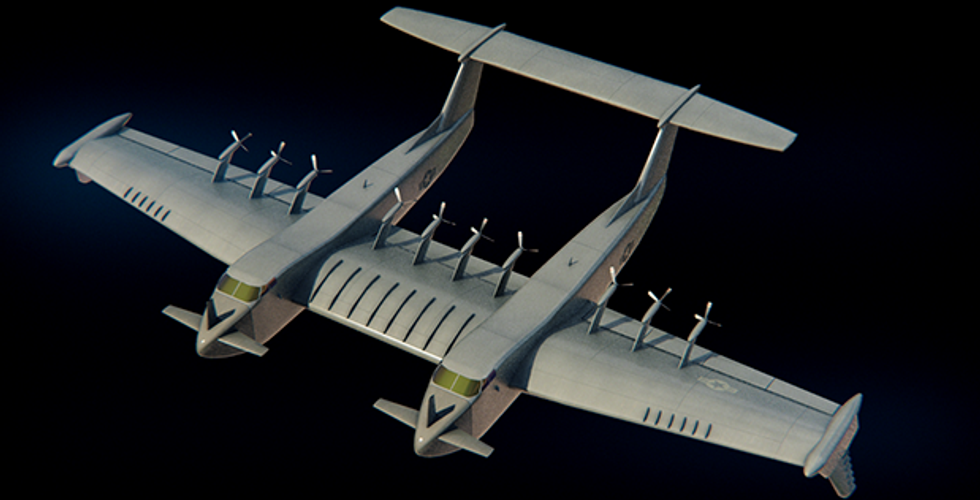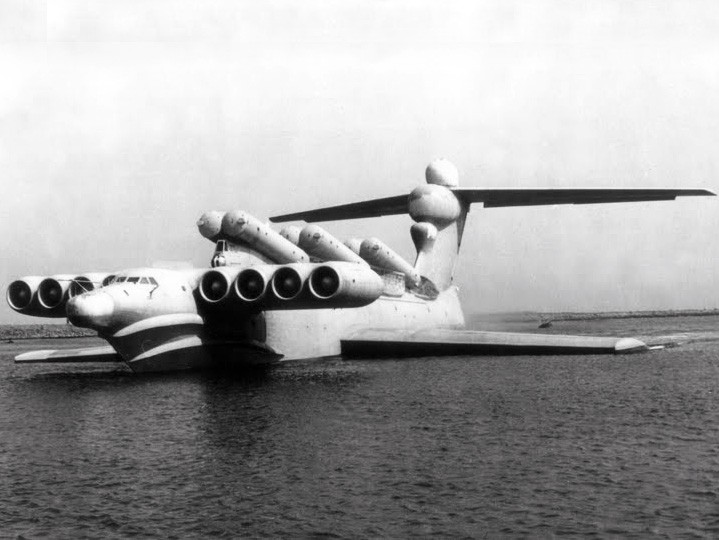From IEEE Spectrum, May 19:

Arguably, the primary job of any military organization is moving enormous amounts of stuff from one place to another as quickly and efficiently as possible. Some of that stuff is weaponry, but the vast majority are things that support that weaponry—fuel, spare parts, personnel, and so on. At the moment, the U.S. military has two options when it comes to transporting large amounts of payload. Option one is boats (a sealift), which are efficient, but also slow and require ports. Option two is planes (an airlift), which are faster by a couple of orders of magnitude, but also expensive and require runways.
To solve this, the Defense Advanced Research Projects Agency (DARPA) wants to combine traditional sealift and airlift with the Liberty Lifter program, which aims to “design, build, and flight test an affordable, innovative, and disruptive seaplane” that “enables efficient theater-range transport of large payloads at speeds far exceeding existing sea lift platforms.”*****DARPA is asking for a design like this to take advantage of ground effect, which occurs when an aircraft’s wing deflects air downward and proximity to the ground generates a cushioning effect due to the compression of air between the bottom of the wing and the ground. This boosts lift and lowers drag to yield a substantial overall improvement in efficiency. Ground effect works on both water and land, but you can take advantage of it for only so long on land before your aircraft runs into something. Which is why oceans are the ideal place for these aircraft—or ships, depending on your perspective.During the late 1980s, the Soviets (and later the Russians) leveraged ground effect in the design of a handful of awesomely bizarre ships and aircraft. There’s the VVA-14, which was also an airplane, along with the vehicle shown in DARPA’s video above, the Lun-class ekranoplan, which operated until the late 1990s. The video clip really does not do this thing justice, so here’s a better picture, taken a couple of years ago:*****
Actually we had a better picture in 2018's "To Protect The Northern Sea Route Russia Is Bringing Back the Ekranoplan!":

A better picture because, yes, those are rocket launchers on top of the fuselage, shown in 3/4-profile.